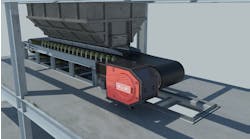Workforce strategies are evolving in the offshore oil and gas sector
By Christopher Handscomb and Nacho Fantaguzzi, McKinsey & Co.
The offshore oil and gas sector is at a critical juncture, facing a triple challenge: maintaining a skilled workforce for traditional operations while simultaneously building capabilities for emerging energy technologies, and all against the backdrop of rapid digital and technological evolution. Strategic workforce planning and innovative talent management strategies are essential to navigate these complexities.
Aging and attrition
One of the most pressing issues in the offshore oil and gas sector is the aging workforce. In the US, nearly a quarter of employees in the sector are at or near retirement age, with similar trends observed in other regions like the North Sea. This demographic shift poses a significant risk to the industry, as it threatens the loss of valuable technical skills, industry knowledge and institutional expertise. Moreover, the sector is experiencing a high attrition rate, with 42% of employees who left their roles in energy and materials companies since 2016 moving to different industries.
To attract and retain talent, the offshore oil and gas sector must enhance its employee value proposition. Research indicates that while the sector scores above average for compensation, it lags in career opportunities, corporate culture and perceptions of senior management. Addressing these gaps is crucial, especially for younger generations who prioritize these factors. Companies can improve their employee value proposition by creating flexible career paths, delaying retirement, and fostering a more inclusive and dynamic work environment.
A coordinated set of interventions
Actions should be taken at a system level to achieve and sustain impact, with oil and gas companies making deliberate moves in a number of areas.
Strategic workforce planning is a critical tool for managing the talent transition in the offshore oil and gas sector. It involves forecasting future talent needs based on business goals and market conditions, allowing companies to proactively address potential talent gaps. For instance, an Asian oil and gas company successfully used strategic workforce planning to expand its focus from 10 critical roles to 50, identifying areas where capabilities and roles were shifting and focusing on both reskilling existing talent and acquiring external talent to fill gaps.
Global talent markets offer a valuable resource for the offshore oil and gas sector. Companies are increasingly revisiting their technical hub strategies to access large, high-quality talent pools in other regions. This approach not only provides access to a broader range of skills but also creates stronger central support models. For example, several oil and gas companies are building and growing technical hubs in regions with abundant engineering talent, such as India.
Moreover, the integration of generative AI (gen AI) and other technological advancements is transforming the offshore oil and gas sector. Gen AI can enhance productivity and augment capabilities by allowing employees to focus on higher-value tasks. Companies are developing proof of concepts for gen AI tools to facilitate knowledge transfer between generations and accelerate training for technical and operational hires. This technological shift underscores the need for a dynamic talent planning model that can adapt to rapid changes in the industry.
To build a resilient talent pipeline, the offshore oil and gas sector must focus on both capacity and capabilities. This involves identifying critical roles and the specific skills required for these roles, as well as creating tailored, skill-based learning journeys for employees. Reskilling and upskilling existing employees can reduce recruiting costs and ensure that the workforce is prepared for future demands.
Conclusion
The offshore oil and gas sector is navigating a complex landscape of workforce challenges, and the key to thriving in the offshore oil and gas sector lies in proactive and innovative workforce strategies. By enhancing the employee value proposition, leveraging global talent markets, embracing technological advancements and implementing strategic workforce planning, companies can build a resilient and agile workforce. These strategies will not only address the immediate talent shortages but also position the sector for long-term success in an evolving energy and digital landscape.





